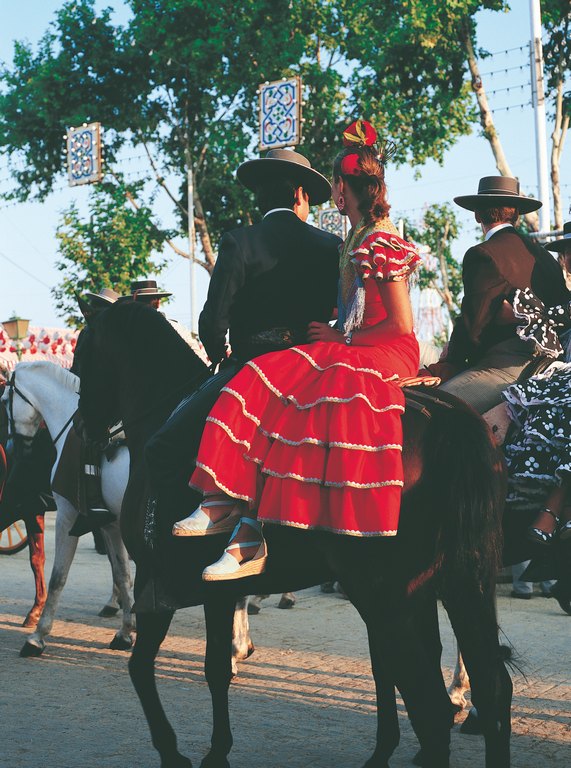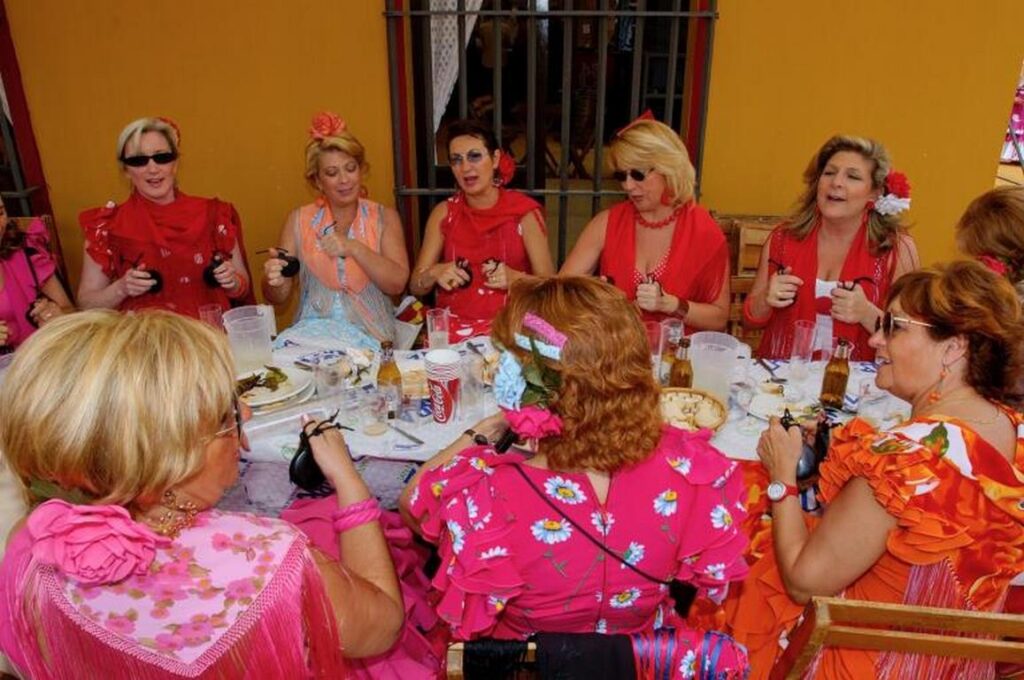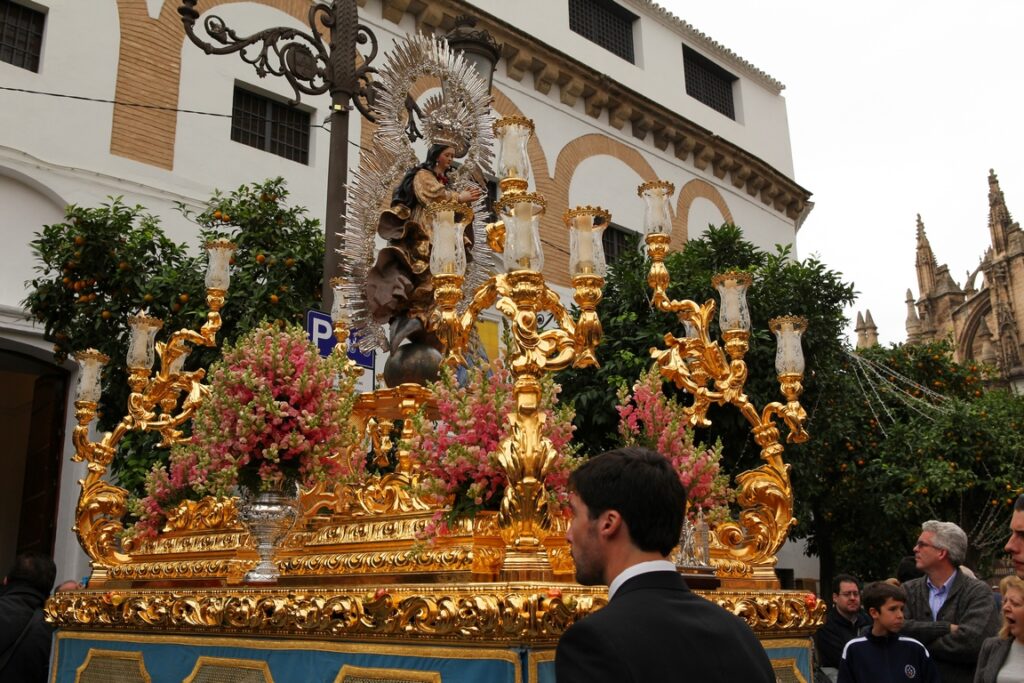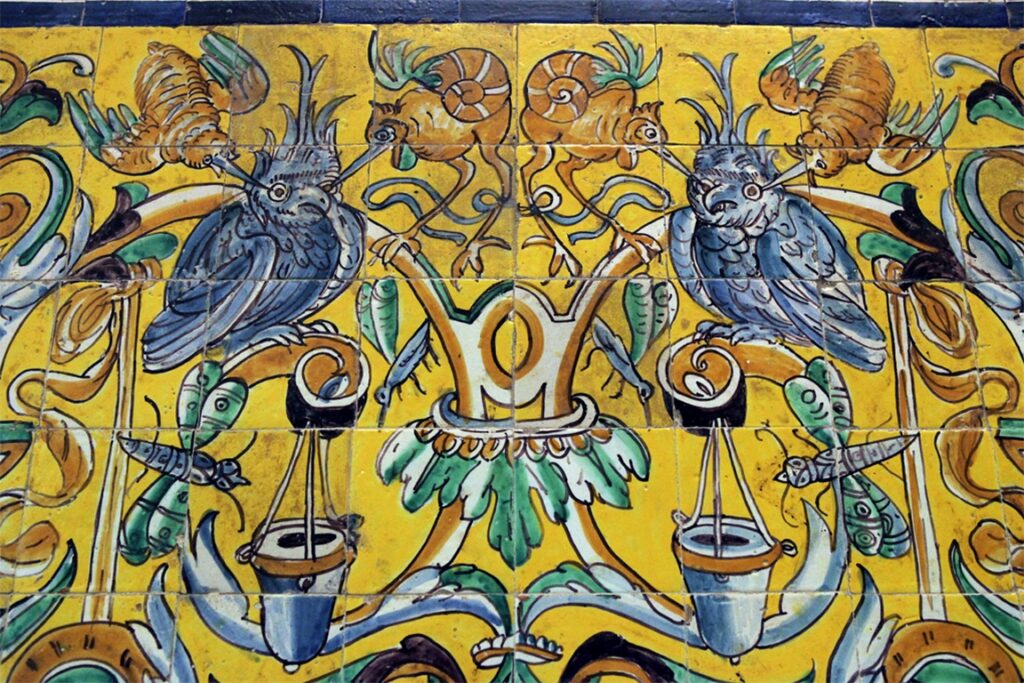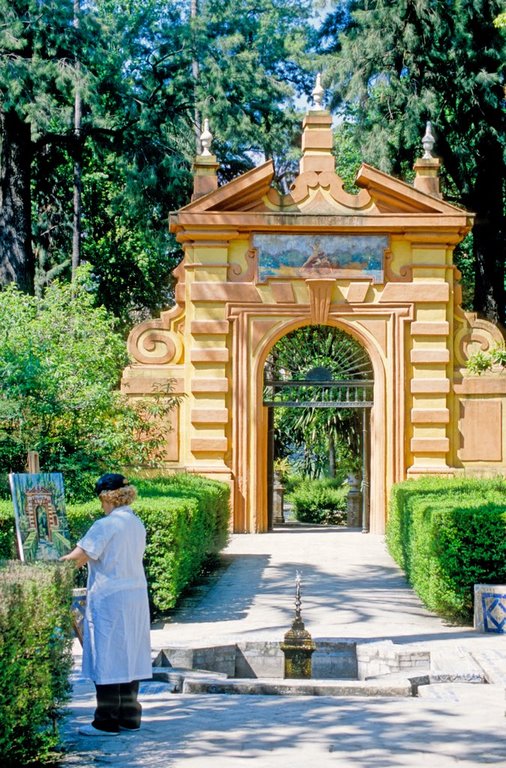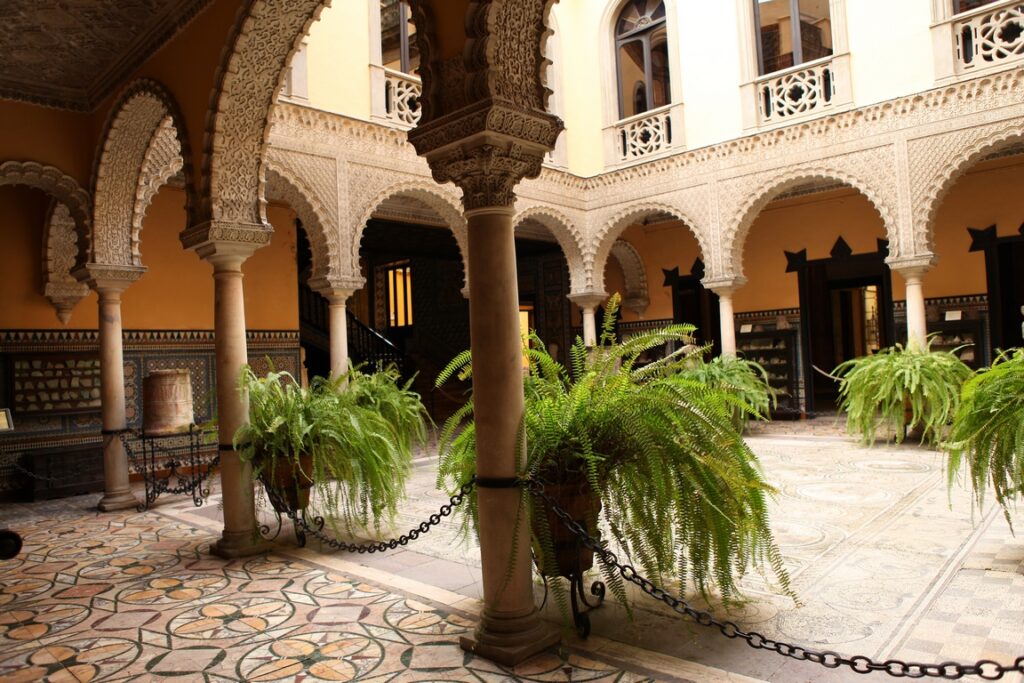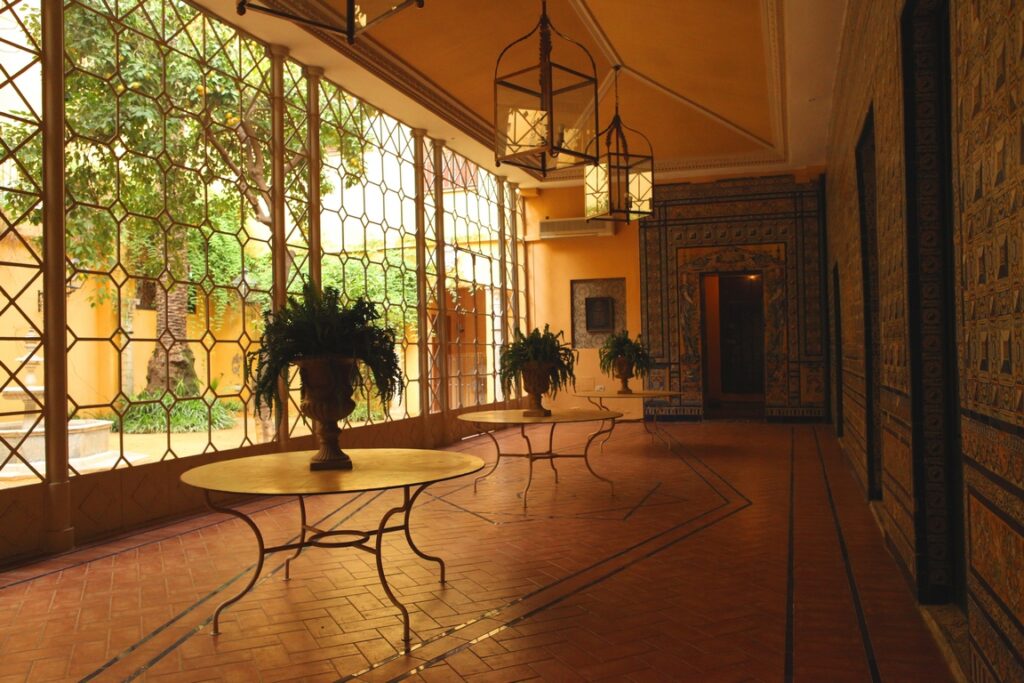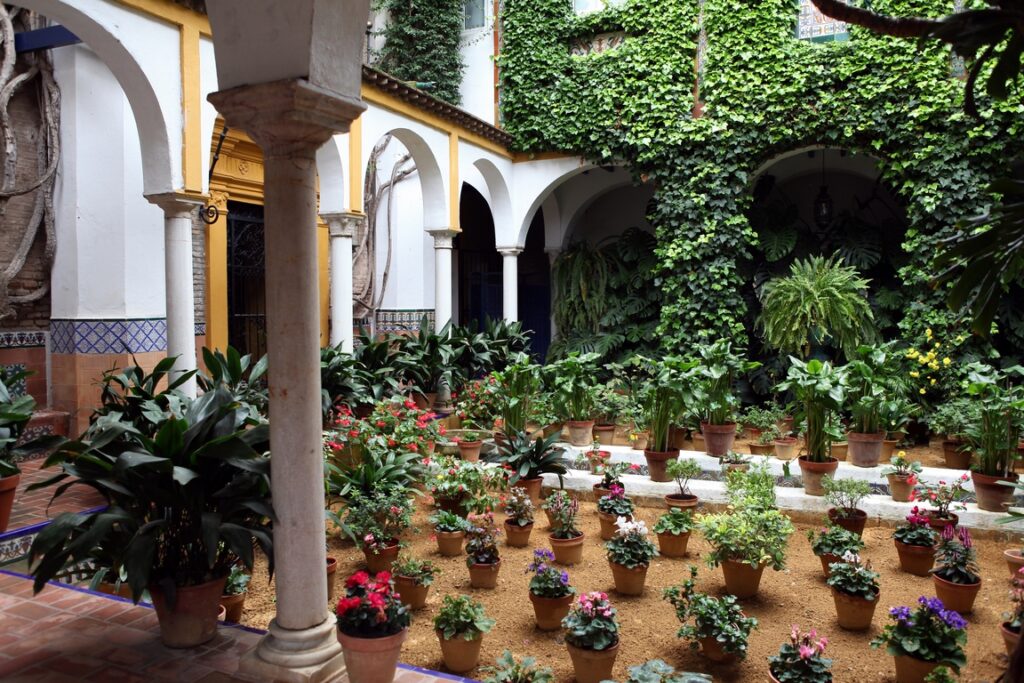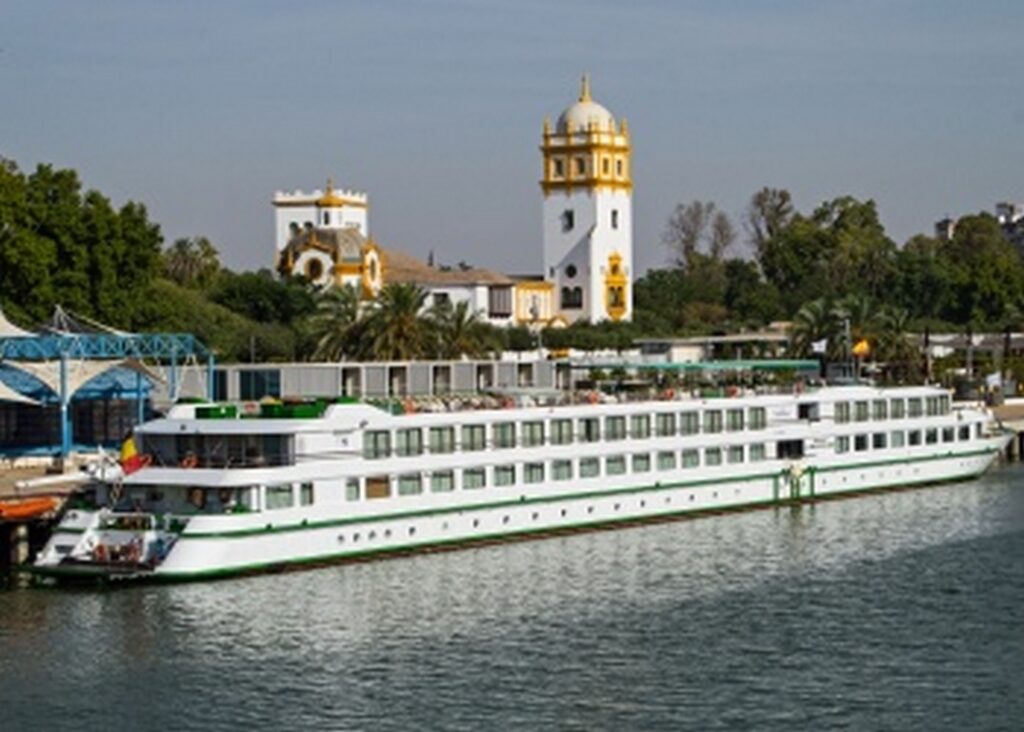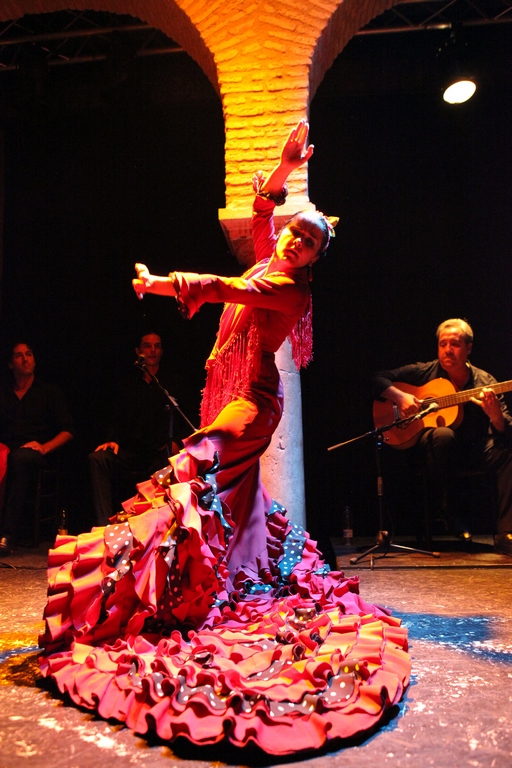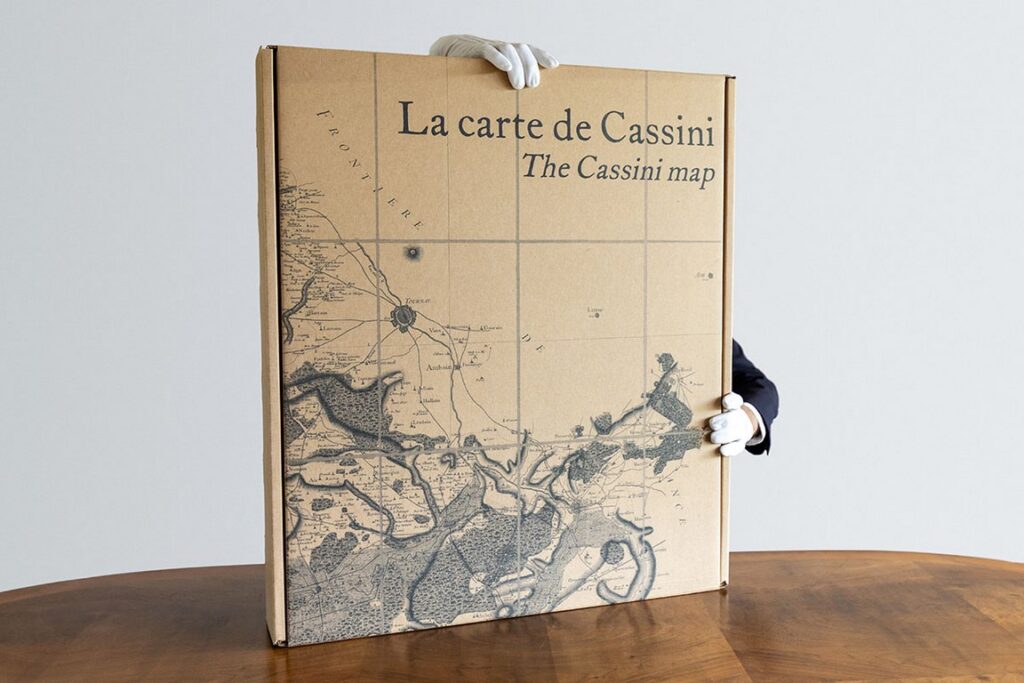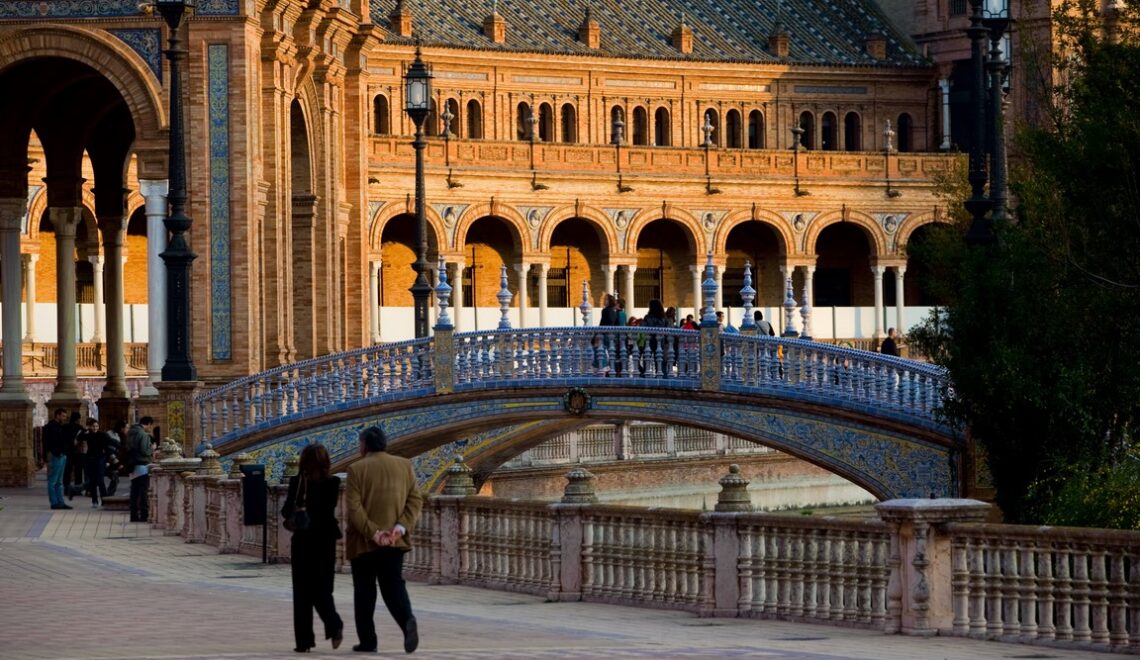
Situated in the south of Spain, crossed by the Guadalquivir, the ancient wadi el Kebir of the Moors that the navigator and discoverer of the New World once sailed along with his fleet, Seville is a unique combination of Mudéjar elegance, the gentle Iberian way of life, the passion of flamenco dancers and the cruelty of bullfights.
The city has been shaped by two thousand years of history. Romans, Moors, Jews, Christians and gypsies have all conquered and loved it, leaving their mark in a colourful patchwork of beauty that has inspired writers and composers. Reverted to Christianity in the middle of the 13th century, it proudly displays the splendour of the Mudéjar period, to which the gold of the Americas has been added.

A festive city
"Near the ramparts of Seville, at my friend Lillas Pastia's house, I'll be dancing the seguedilla and drinking manzanilla", sang the indomitable Carmen. These days, it's the youth of Seville who spill out into the tapas bars at night, strolling through the narrow streets and patios scented with orange blossom. Every evening, it's the same ritual. Slowly, the pavements and plazas overflow with cerveza drinkers. The monuments are bathed in a golden light that makes the lacy stonework of the Giralda and the cathedral stand out even more clearly. Seville is a night owl. Lovers take advantage of the darkness to embrace on the steps of the churches, and party-goers gather in public spaces to enjoy botellón improvised parties. Thousands of young Spaniards have got into the habit of meeting up in the evening in the streets and squares of towns and cities to get together with friends and drink large quantities of alcohol. Before ending the night in a club or in one of the many bodegas in the trendy Triana district. This phenomenon, originally anecdotal in Seville, began in the 1990s. It developed completely separately from bars and other drinking establishments, but its gradual spread has now made it a veritable social phenomenon. Now banned by law because they leave traces, the botellón continues however to attract many foreign students. Until the police went on a nightly 'sweep'!
In this city, where every evening is a night of the forbidden and the exuberant, religion and celebration go hand in hand. Sunday morning processions, magnified during Holy Week, virginal dresses in the many bridal shops, the clamour rising from the bullring at the Plaza de toros de la Maestranza, or duende of flamenco dancers who thrill Andalusians and tourists alike, everything here seems to magnify life and death.
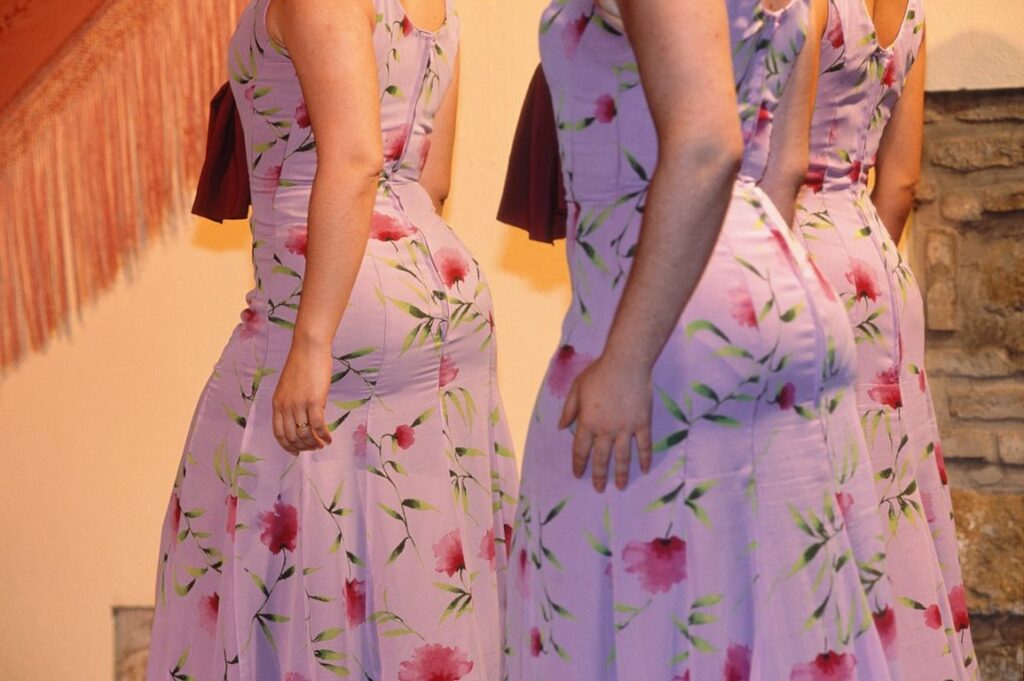
Don't hesitate to visit the museum-school run by Cristina Hoyos, a pupil and partner of Antonio Gadès, who passes on this fusion dance to dancers from all over the world. The quality of the artists will blow you away. A world showcase for flamenco art, the Biennial in September remains a major tourist and cultural attraction.
An exceptional heritage
The best way to get to grips with this city of theatre and its historical and cultural heritage is to wander through the labyrinth of pedestrianised streets in the old Jewish quarter of Santa Cruz, the heart and soul of historic Seville. The city centre is a labyrinth of narrow streets and passageways, where you can enjoy a pleasant stroll or sample tapas in one of the district's many restaurants or bodegas. A visit to the cathedral, built on the site of an Almohad mosque, is a must.
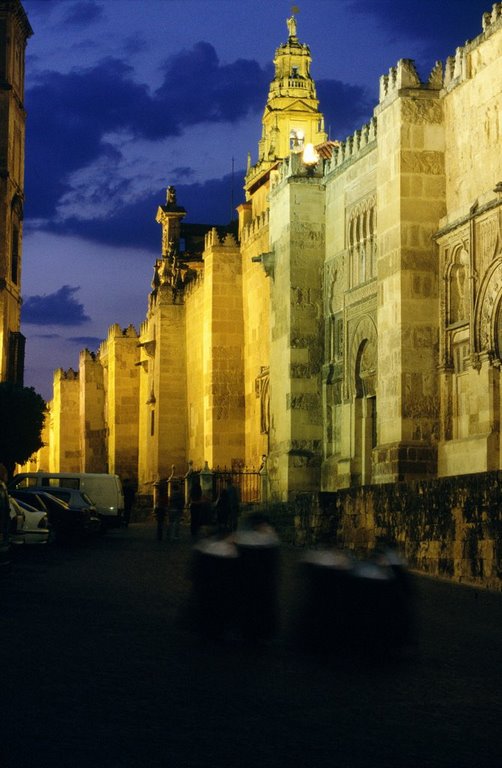
It was during the 12th century that the Almohads, a Muslim dynasty of Berber origin, built the Great Mosque of Seville. After the Christian conquest of the city, construction of the cathedral began on the site of the mosque itself. The monument was begun in 1401 and completed after more than a century of work. At 116 metres long and 76 metres wide, Seville Cathedral is the largest Gothic cathedral in the world. It was declared a World Heritage Site by UNESCO in 1987.

The minaret, the Giralda (giraldillo is the Spanish word for weather vane), It has become the cathedral's bell tower and the symbol of the city. It is topped by a colossal bronze sculpture that Cervantes's Don Quixote described as "Seville's giant", the most beautiful thing in the world". "Seville's giant" . It has two brick towers, one on the outside, the other on the inside. Following the typology of Almohad minarets, its exterior facades are decorated with sebka, a sort of brick lacework, with multi-lobed arches. From the top of the old minaret, you can see a colourful picture stretching far out over the river. Down below, take a break in the Patio de los Naranjos: the courtyard of orange trees, formerly the mosque's ablutions courtyard.
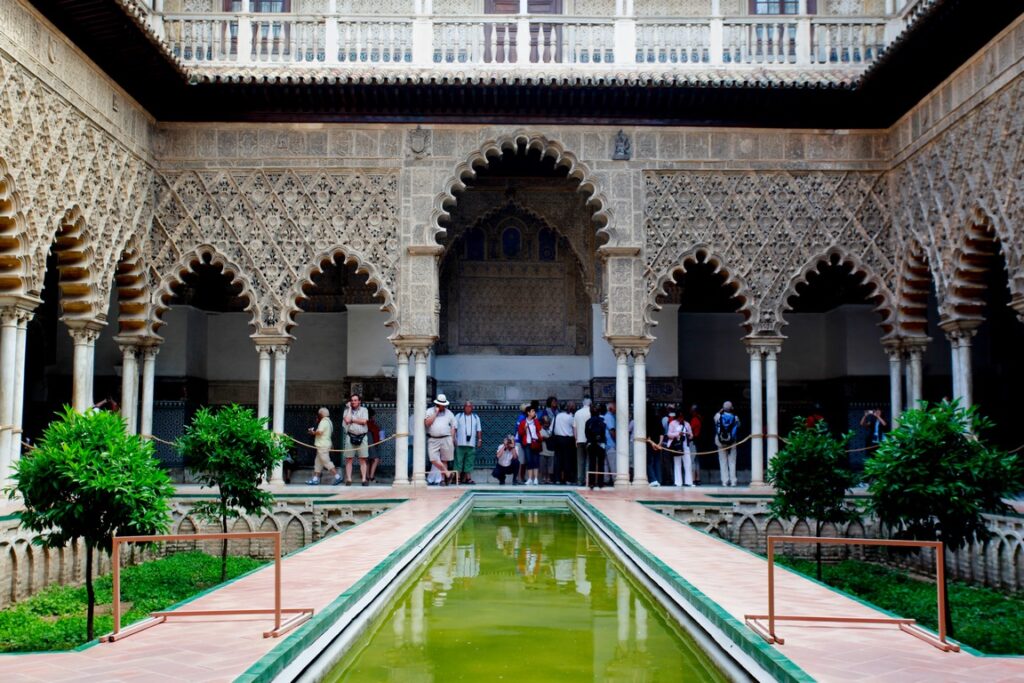
The walls of the Alcázar royal palace protect the district. Its origins date back to the 11th century, when the Muslim authorities decided to build a fortress in a strategic area of Seville to guarantee their security. The Alcázar's walled enclosure is made up of various palaces and gardens designed at different times. The palace was modified on several occasions, in line with the monarchs who resided there. Hence the great variety of styles, combining characteristic elements of Islamic, Gothic, Renaissance, Baroque and Romantic art, as well as fine examples of Mudéjar style.
Inside, you will never tire of admiring the magnificent flats of Isabella the Catholic and Charles V, decorated with azulejos.
In the famous gardens, stroll through a labyrinth decorated with mosaics, planted with myrtle, orange and lemon trees and murmuring with refreshing fountains.
You can then go on to the bullring, one of the oldest in Spain.
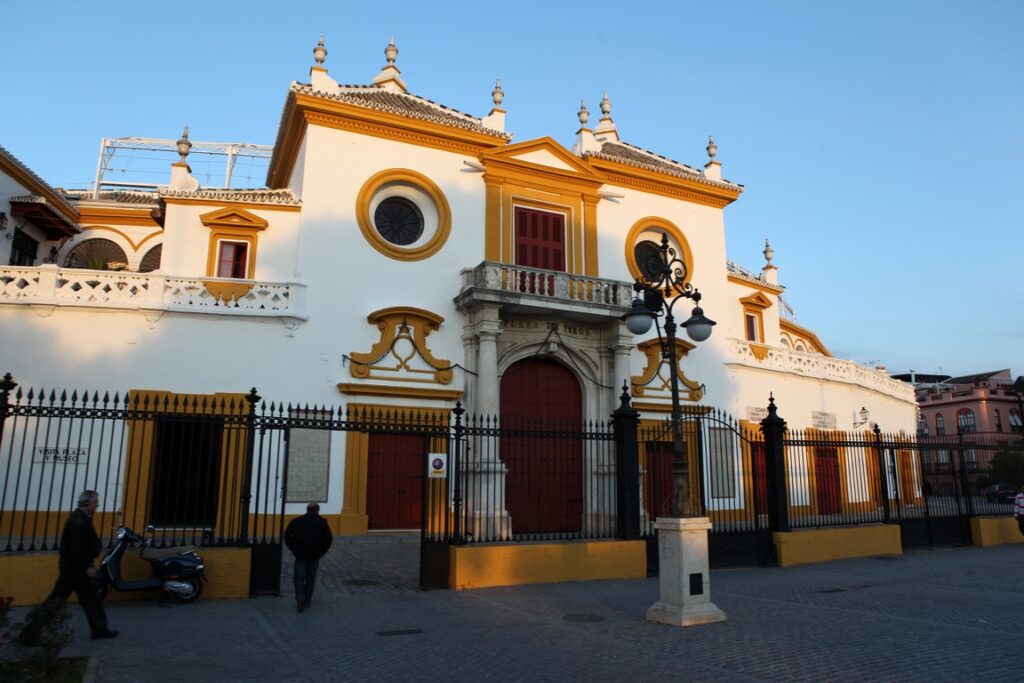
We prefer the museum des Bellas Artes home to masterpieces by Murillo and Zurbaran. Or simply wander through the streets, past the small squares and flower-filled patios.
Palace of the Countess of Lebrija
On the other bank of the Guadalquivir, the Triana district has retained the popular atmosphere of Old Seville. This is where the palace of the Countess of Lebrija stands. A stately home in the 16th century, the palace is one of the jewels of Seville. In 1901, it became the property of Regla Manjón Mergelina, Countess of Lebrija, who restored it and converted it to house antiques. During her lifetime, the Countess filled an entire palace with a collection of art, archaeological remains, amphorae, furniture and beautiful mosaics. The walls are beautifully decorated, with Arab arches and an Andalusian façade; a beautiful city palace to visit.
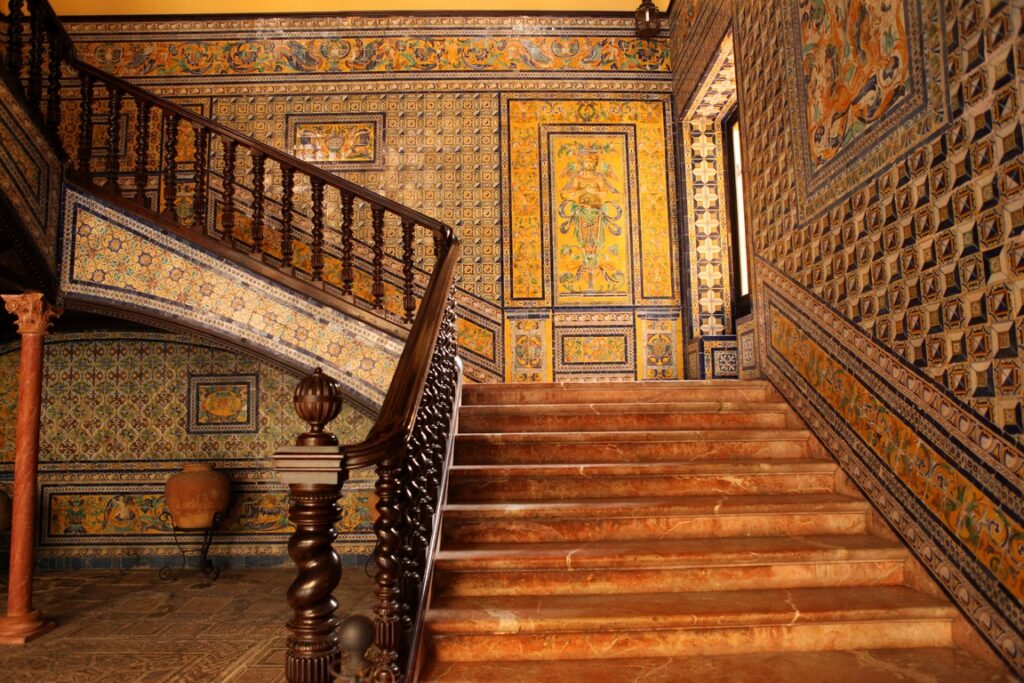
Calle de San Jacinto is the main shopping street in the district. It leads into Calle Alfarería, where potters' workshops continue to work in the traditional Triana ceramic style. The whole of Calle Castilla leads into the Alle de la Inquisición, where the patios of the houses are overflowing with flowers.
To the south of Santa Cruz, the 400,000 m² Parc María Luisa is a favourite place for Sevillians to stroll and relax. It was once part of the Palacio Santo Telmo, and is named after the Infanta Maria Luisa Ferdinand of Orleans, who gave it to the city as a gift in 1893. The park is criss-crossed by long avenues bearing the names of famous conquistadores.
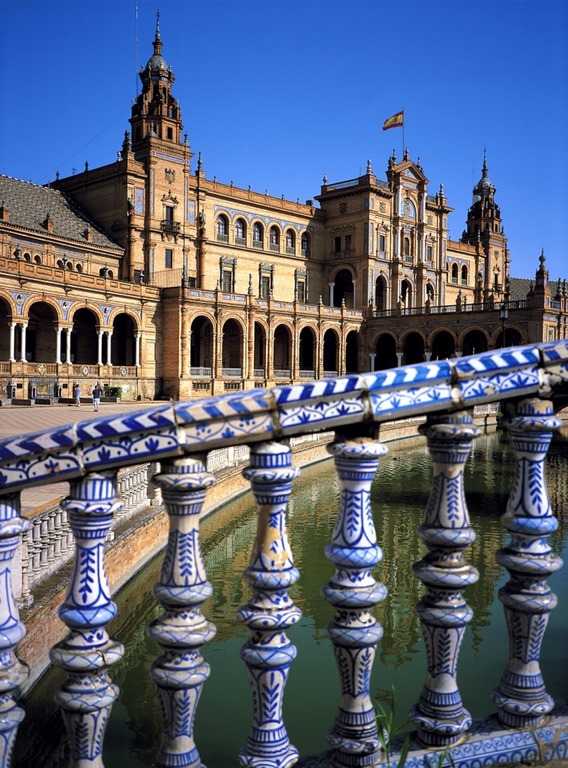
Integrated into the park, the Spanish and American squares were created for the Ibero-American Exhibition in 1929-1930. The pavilions of the 20 participating countries have been preserved. Home to a rich variety of exotic and European plants, this park, with its many ponds and fountains, is a real delight.
Andalusia by boat: traditions, gastronomy and flamenco on the MS Belle de Cadix
An eight-day cruise on the MS Belle de Cadix which will take you from Seville to Granada, Cordoba, Cadiz, Jerez and back. As soon as you embark, you'll be seduced by the charm and authenticity of this boat, with its well-kept décor and warm colours. You'll appreciate the spacious, well-equipped cabins, where you'll discover different horizons every day from your window. The MS Belle de Cadix is a French river cruise ship that sails the Guadalquivir, the Guadiana and along the Atlantic coast. Built in 2005 and renovated in 2010, the Belle de Cadix is 110 m long and 11.4 m wide. She accommodates 178 passengers on 3 of her 4 decks. Her average speed is 15 knots.
Full-board cruise with drinks included. Special return flight Paris (or province) / Seville included. From €1,397. Children up to 14 years old 30 % discount (subject to availability). https://www.croisieurope.com/croisiere/andalousie-traditions-gastronomie-flamenco-classique. Information and bookings: info@croisieurope.com Indigo number: O825 33 777.
Stay
Charming spirit at Las Casas del Rey de Baeza, A tastefully restored palace in an ideal location for strolling through the narrow streets of Santa Cruz. Bonus: its swimming pool overlooking the rooftops of Seville. https://www.hospes.com/fr/casas-rey-baeza/
Petit Palace Marqués de Santa Ana. Situated close to the Arena de la Maestranza, the cathedral and the Plaza Nueva (Town Hall Square) in the heart of the historic city centre, the hotel occupies a charming 19th-century Sevillian palace. The central patio is surrounded by a portico and a gallery that leads to the rooms. Very quiet location. C/ Jimios, 9-11 - 41001 Sevilla
Tel. 00 34 954 221 812
http://www.hthoteles.com
Flamenco Dance Museum and flamenco show - C/ manuel Rojas Marcos, 3 - Tel. 954340311
www.museoflamenco.com
Text : Brigitte Postel
Photos : Sylvain Grandadam and Brigitte Postel

